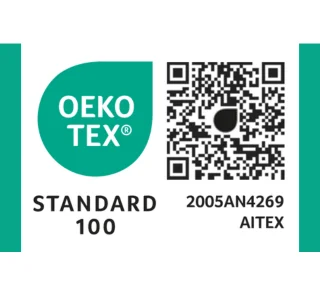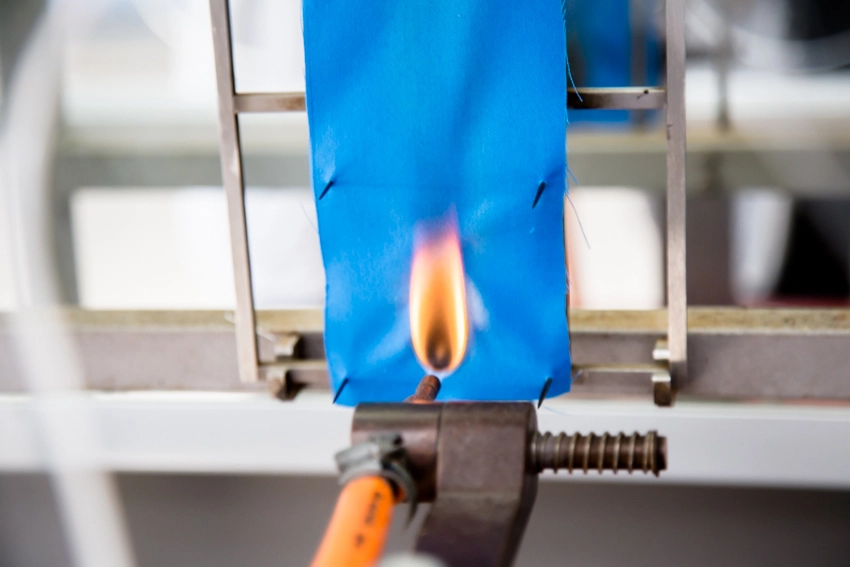There are different tests that check the behaviour of a PPE against the fire / flames hazards, but probably, the most realistic is the commonly known as “Manikin Test”.
The test is ruled by the regulations ISO 13506 (in case of Europe) and ASTM F1930 (in case of America).
It consists in to evaluate the behaviour of the garment in case of sudden/flash fire, where the result is the percentage of burns (and the degree of them). Indeed, the test divides the body in different regions, each one with a sensor that will check the heat received and determine the degree of burn (in case there is). The areas of each sensor are shown in the following picture:

As shown, the area covered by the test is the full body, and the result can be expressed with head, hands and toes and without them. The goal is to have the less percentage of 2nd (orange) and 3rd (red) degree burns, so the lower value it gives, better will be the result.
Depending if the test is run as ISO or ASTM, some of the parameters change, as shown in the following table:
| ISO 13506 | ASTM F1930 | |
| Heat flux | 84 +/- 5 kW/m2 | 84 +/- 5 kW/m2 |
| Time | 3 – 12 s | 3 s |
| Data recording time | 60 s (one layer) / 120 s (more layers) | ≥ 60 s |
| Nozzle torch burners | Mínimum 8 | 12 |
| Pre-treatment | 1 washing cycle if there is not any other specification coming from the manufacturer | 1 washing cycle |
In addition, the ASTM F1930 (covered by NFPA 2112) allows a maximum of 50% of burns to consider a “valid” test.




